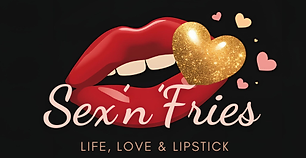💋 Can We Blame Barbie?
- Feb 18, 2020
- 3 min read
Updated: Oct 9

A Real Talk About Body Image, Media Illusions & Learning to Like Ourselves Again
Barbie was normal when I was a young girl — dressing her up, brushing her hair, and trying to find matching shoes before the dog ate them. Marsha Brady brushed her long blonde hair a hundred times before bed. Twiggy was impossibly thin with no breasts — I related to that part. I was called “bean pole.” Meanwhile, Farrah Fawcett and Cheryl Tiegs were plastered on boys’ walls.
That was my normal — a youth surrounded by beauty comparisons I didn’t recognize as toxic. I didn’t even think about self-esteem until my twenties, when I realized how much I craved validation. I had become a compliment junkie — searching for scraps of assurance that I was “good enough,” “pretty enough,” or even just “average.” Except, in my mind, average was already diluted by media perfection.
📺 The Media Mirror
From TV to magazines to the internet, beauty was everywhere — but it wasn’t real. Perfectly airbrushed women with flawless skin, endless legs, and not a visible pore in sight were being used to sell everything.
And it worked.
Because when your confidence is low, you turn inward — or rather, toward the shopping cart. “Look what this product can do for you,” they say. “Be younger, thinner, smoother, sexier.”
Women’s magazines and ad campaigns became the rulebook for self-worth. When I couldn’t look that way, I stopped trying. “Why bother?” became a familiar phrase — one I used to beat myself down.
That mindset turned into laziness, not in effort, but in hope.
It was easier to give up than to keep comparing myself to an illusion.
🍟 When “Why Bother” Becomes a Lifestyle
The cycle of giving up leads to unhealthy habits — eating mindlessly, moving less, hiding behind track pants. The proof wasn’t just in my wardrobe; it was in my energy, my confidence, my self-talk.
No wonder so many women fall into disordered eating or body image struggles. We’re drowning in beauty standards that not even the models themselves can meet without lighting, filters, and editing teams.
🤔 Who’s to Blame?
Is the media the source of our body image issues? Or are we complicit because we absorbed it without questioning it?
We could blame the industry that sells “perfection.” We could blame men for feeding the fantasy. But maybe the hardest thing is to admit that we let those ideals take root in our minds — and we didn’t have the tools to protect ourselves.
It’s not vanity. It’s conditioning.
We all know sex sells. But what it really sells is self-doubt, packaged as empowerment.
🪞 Reflections, Daughters & the Next Generation
When I had two beautiful daughters, I wondered how to protect them from this self-esteem trap. How do you teach them that beauty is more than filters and “before and after” shots — without sounding like a bitter old lady?
How do you tell them that you still struggle with it?
Body image distortion creeps in quietly. You can know you’re attractive, confident, even sexy — but still feel “less than.” That’s the mind game.
It’s not your body that’s distorted. It’s your reflection through the lens of expectation.
💭 Can It Be Undone?
Is there a way to reverse years of media illusion?
Maybe the answer isn’t to erase those standards but to flood the feed with real diversity — of age, color, shape, size, and story. Maybe when we see enough real women, the unrealistic ones start to fade into the background.
And maybe, most importantly, we stop waiting for permission to like ourselves.
❤️ Final Thought
In fairness, I let those false visions live rent-free in my head. I didn’t do the maintenance my self-confidence deserved — but now I know better.
I’m not blaming Barbie anymore. She’s plastic. I’m real. And real is what I’ve been searching for all along.




Comments